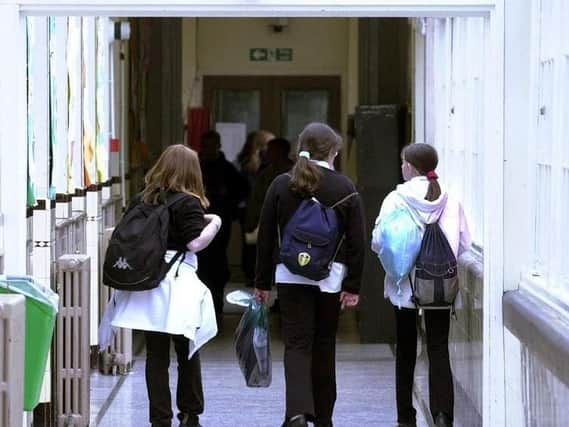Poorer grades for Wigan children in care


The charity Become, which supports children in care, said the “stark gap” highlighted the impact of childhood adversity on learning and called for teacher training to provide support.
Department for Education data reveals that students looked after by the local authority are being left the equivalent of more than one GCSE grade behind their classmates.
Advertisement
Hide AdAdvertisement
Hide AdThe difference is based on the Progress 8 score, a measure introduced in 2016 to show the progress a student makes from the end of primary school to when they finish secondary education.
It is done by comparing their GCSE and other exam results at Key Stage 4 to the average scores of other students who performed similarly at Key Stage 2.
A score of 0 means they are in line with the average, while a score of -1 would indicate they are about a grade behind where they are expected to be.
The score for children in care in Wigan was -1.6, compared to -0.3 for all pupils in the 2017-18 academic year.
Advertisement
Hide AdAdvertisement
Hide AdThis means that children in care progressed more than a grade less on average than the average for all pupils.
It is also almost half a grade worse than the average of -1.2 for children in care across England.
The figures for all children only include students in state-funded schools, while those for children in care also include pupils from non-maintained special schools and alternative provision.
Children in care – also referred to as looked-after children – are defined as having been in the care of their local authority continuously for at least 12 months.
Advertisement
Hide AdAdvertisement
Hide AdThis means they could have been living with foster parents, in a residential children’s home, or a school or secure unit.
Cath Pealing, interim assistant director for education at Wigan Council said: “We want our children in care to have the best education possible and we take it incredibly seriously as part of our role as corporate parents.
“We are working in close partnership with our school leaders to ensure that all children, particularly our most vulnerable, are supported in their settings and have access to the help they may need.
“Our schools employ designated teachers who coordinate specific, individual support for our looked after and previously looked after children.
Advertisement
Hide AdAdvertisement
Hide Ad“These teachers have an excellent understanding of how early childhood experiences can impact on a child’s ability to learn.
“They also work in close partnership with our Virtual school team to identify and support our young people within their education settings.
“Our primary school-aged, looked-after children do show year on year improvements in attainment, however, we understand that our attainment outcomes need to improve. We will continue to review the ways that we do this with schools and parents. We are really proud of the resilience that our young people demonstrate and we are committed to supporting them to achieve and develop.”
Sam Turner, from Become, said: “The stark gap in attainment between looked-after children and their peers at school demonstrates the huge impact that childhood adversity has on children’s ability to learn.
Advertisement
Hide AdAdvertisement
Hide Ad“Most children enter care as a result of abuse or neglect, and for too many, their lives do not feature the stability and support they need to heal from this trauma and thrive in school.”
He said schools should provide all-staff training on what it means to be in care and how to support children who have experienced trauma.
Children and Families Minister Nadhim Zahawi said: “The Government is committed to ensuring that looked-after and previously looked-after children are supported to succeed in education, with extra funding to meet their needs through the Pupil Premium Plus, worth £2,300 per child, and other measures such as the Virtual School Head to track their progress.
“We are also carrying out a review into children in need to go further in improving outcomes – as part of this we have already published a bank of extensive good practice that teachers and social workers have identified to support children to thrive in education and achieve better outcomes.”